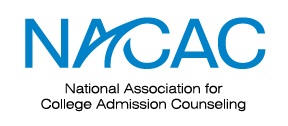Creating a Transcript
The transcript is a concise (usually one page) statement of what your teen has learned during his or her high school years. The transcript includes course titles, year studied, credits awarded, and grades earned. How can you compress all that learning into only one page? Here is one example of a partial transcript
|
Official Transcript
Tranquility Academy
|
|
Student Data
Ima Teen
123 Happy Lane
Happy, NJ 08550
DOB: 8/1/92
Gender: F
|
School Data
Tranquility Academy
123 Happy Lane
Happy, NJ 08550
Telephone: 609.123.4567
Parent: Ima Parent
|
Junior Year Report
Date Issued: 6/3/2013
Total Credits: 23
G.P.A.: 4.0
|
|
course
|
credit
|
2010-2011
Freshman
|
2011-2012
Sophomore
|
2012-2013
Junior
|
|
English
|
|
|
|
|
|
World Literature
|
1
|
A
|
|
|
|
American Literature
|
1
|
|
A
|
|
|
AP Eng. Lang & Comp*
|
1
|
|
|
A
|
|
|
|
|
|
|
|
Mathematics
|
|
|
|
|
|
Algebra I (8th grade)
|
1
|
A
|
|
|
|
Geometry
|
1
|
A
|
|
|
|
Advanced Algebra
|
1
|
|
A
|
|
|
Statistics
|
1
|
|
|
A
|
|
|
|
|
|
|
|
Science
|
|
|
|
|
|
PHY 111: Physical Science Concepts**
|
1
|
A
|
|
|
|
BIO 114: Environmental Science Concepts**
|
1
|
A
|
|
|
|
CHE 101: General Chemistry I**
|
1
|
|
A
|
|
|
CHE 102: General Chemistry II**
|
1
|
|
A
|
|
|
Biology w/Lab
|
1
|
|
|
A
|
|
|
|
|
|
|
|
* APEX course
** Mercer County Community College Course
|
Grading System
A=Mastery
B= Comprehension
C=Basic Understanding
|
|
|
|
|
|
|
|
|
Since you’re the “school,” you can organize the transcript however you like. If you need inspiration, a Google search of “sample high school transcript” will generate millions of hits. Whichever format you choose, you’ll want to include identifying information about your student–his/her name, address, date of birth, and graduation date–and information about your homeschool–school name, address, phone, name of parent/guardian overseeing the student’s education, date that the transcript was generated, and an explanation of your grading system.
If your student takes a community college or online class, include those credits on your master transcript. In the sample transcript above, those types of classes were denoted with asterisks. Your teen will also want to request that brick and mortar or cyber schools send official transcripts as part of a college application.
Two questions that often arise around transcripts are:
1. How do I decide what constitutes a credit?
The term “credit” can be a little confusing. Traditionally, it is a measure of time: how much time did a student spend in “contact” with, or being “instructed” by, a teacher. High schools and colleges use slightly different calculations to determine credit hours; there is also variation among States and even among school districts. To keep things simple, I usually think of one credit as the equivalent of work done in a high school class that meets for about an hour for 5 days/week for one academic year (September-June). This approach can be used for science and math courses with a more standard and narrowly defined content (e.g. Algebra–if you cover the material in a standard textbook, it’s worth 1 credit whether it takes you 1.5 years or 0.5 years) and Humanities courses with no standardly defined content (e.g. English I: you determine how much work –number of books read/stories written/speeches orated/plays performed– equals 1 credit).
2. How do I decide which credits to include?
College admissions officers often begin to evaluate credits by separating them into 3 broad categories: academic subjects (English, Science, Math, Social Studies, Foreign Language), electives (Industrial, Visual, and Performing Arts), and physical education. In NJ, at a minimum, public high school students are expected to complete the following credits:
· 4 English
· 3 Math (1 Algebra, 1 Geometry, 1 additional that builds on Alg. and Geo.)
· 3 Lab Science (1 Biology, 1 Chemistry, Physics or Environmental Science, 1 additional)
· 1/2 Financial, Economic, and Entrepreneurial Literacy
· 1 World History
· 2 U.S. History
· 1 Visual/Performing Arts
· 1 21st Century Life & Careers
· 1 World Languages
· 3/4 credit per year Health & Physical Education
· 4.5 Electives
Some homeschoolers find it helpful to use these or similar labels when documenting learning on a transcript. So, for example, the trips you took to colonial Williamsburg, Plimouth Plantation, Independence National Historical Park, Valley Forge, and Washington D.C. could all contribute toward a credit entitled “U.S. History I.”

